Ron and I arrived in this Mexican colonial favorite – San Miguel de Allende after a four-hour bus ride from Mexico City. Yes, we took a double-decker cross country bus! Public transportation in Mexico is not what you might think.
Here, buses run on-time, are modern, clean, and have bathrooms. When you purchase tickets you also pick your seat, each one equipped with a screen for watching TV, concerts, or movies, or playing video games.
An advantage of riding one of these modern buses is that we didn’t have to arrive two hours prior to departure time like we do when we travel by air. We could have easily shown up just minutes before our scheduled departure time and still have been OK because security was fast and easy. And then there’s the price. Our tickets from Mexico City to San Miguel cost about $58 US total for both of us. To compare, two airline tickets would have cost $130, plus we would have spent another $78 for an Uber to pick us up from the airport.
Arrival at SMA and Our First Impressions
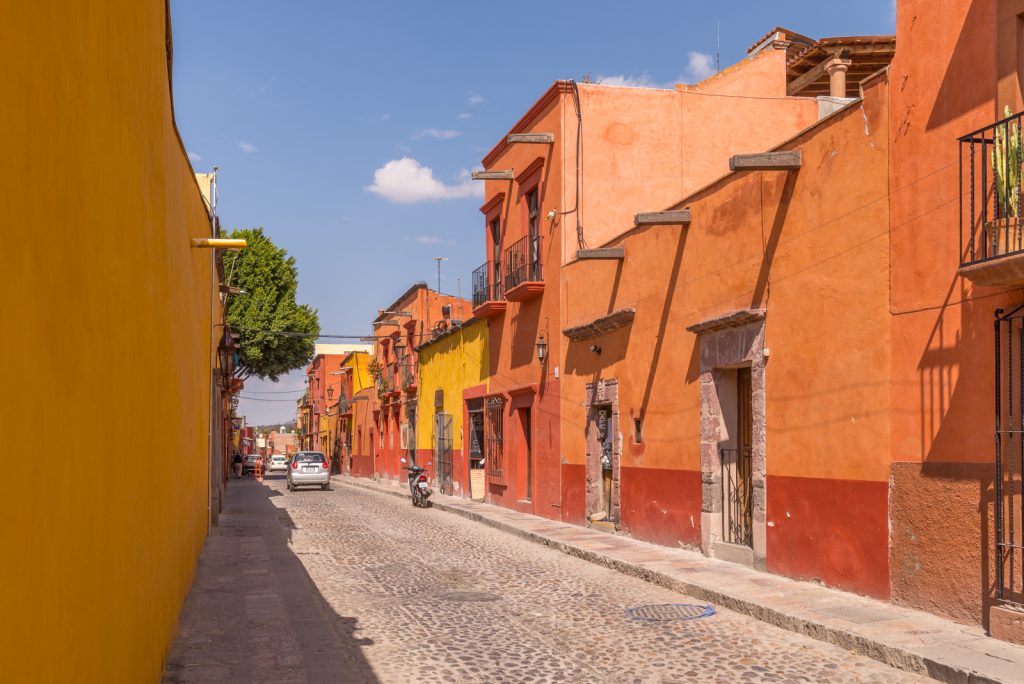 When we arrived at the San Miguel bus station, we knew it would have been difficult to drag suitcases up the centuries-old streets, so we flagged down a taxi. We quickly found out we’d made a good decision.
When we arrived at the San Miguel bus station, we knew it would have been difficult to drag suitcases up the centuries-old streets, so we flagged down a taxi. We quickly found out we’d made a good decision.
Bumping along in a small four-passenger car, we wound our way up the narrow cobblestone streets, never going more than 20 miles an hour, and stopping occasionally to make way for other autos coming from the opposite direction. We noticed there were no paved or asphalted roads, or cement sidewalks. And we’re not sure they even exist in SMA.
Pedestrians walk in a single-file or side-by-side with one person walking in the street. Entrances to shops, hotels, and cafes open right onto the narrow walkways so people must be on guard when exiting a building. Street signs, if they exist at all, are not clearly marked. And hand-painted numbers on some buildings that serve as addresses are not necessarily in sequential order.
San Miguel is a favorite destination spot for expats and tourists and, although I was not expecting quite this much rustic-ness, it didn’t take long to understand why people love it here.
Locals and foreigners alike are courteous and respectful, so when our driver stopped in the traffic lane to drop us off at the hotel, drivers behind us were not rude or impatient and no one tried to squeeze by.
Location, Location, Location
Our lodging in SMA was a little boutique hotel, Los Agaves, and we would highly recommend it. Ideally located, the Los Agaves is conveniently located, clean, safe, and affordable at $68 per night. Although staff members are non-English speaking, they were all exceptionally friendly, accommodating, and loved it when we tried to converse with them via hand gesturing and phone translating apps.
Across the street from our hotel is the Instituto Allende which is a famous school that attract people of all ages and from all over the world. Subject areas include interior design, foreign languages, painting, weaving, sculpture, and drama, and range from a single class to series of lessons that last for several weeks.
As we were wandering around the campus, grade schoolers were getting out of an art class. Small groups of three and four people were sitting under shade trees taking language lessons. And, in another area just down from the campus café, a class on the history of the Aztecan empire was just getting underway. This school takes reservations in advance, and Ron and I agree that we would love to spend several weeks or months in this beautiful place, sitting under the massive shade trees, taking individualized Spanish lessons.
Excellent Choices for Foodies
As with lodging, the price of meals is usually less expensive than what we’re used to paying. An example of this is when we went for an early dinner at an adorable patio restaurant just a block down the street from our hotel. We had heard that the Heche en Mexico is an expat favorite and that there’s often a wait to get in. But it was late afternoon when we stumbled upon the place so we were able to get right in. Waiters in black shirts and colorful embroidery duck in and out of rustic archways carrying trays of food and drink while guests enjoy the ambiance and lively music. The cozy fountained courtyard, banana-leafed plants, and patio lighting add to the tropical appeal.
As we expected, our meals were phenomenal — as was the service. 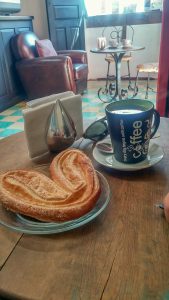 Our waiter spoke little English and we know very little Spanish, but we ordered without a problem. As for pricing, it was cheaper than what we would find in Phoenix or Albuquerque and well worth the money for amazing veggie fajitas.
Our waiter spoke little English and we know very little Spanish, but we ordered without a problem. As for pricing, it was cheaper than what we would find in Phoenix or Albuquerque and well worth the money for amazing veggie fajitas.
However, the next day we ventured a little further from our hotel and past the town square because we’d heard that if you get a block or two away from the main streets, there are lots of locals’ favorite eateries. And some of them are supposed to be less expensive than what Americans are used to paying.
We decided to try one just a couple blocks from the town center. Oh, yes, it’s true! Our total lunch bill — for both of us — was $5 US! We each had a filling meal of excellente tacos, a side salad and large hibiscus waters. Our tacos were cooked to order on giant grills and tortillas were freshly made. A variety of red and green salsas, chopped and dried chili peppers, jicama, and other additions I didn’t recognize were lined up at the counter. Everything was delish and, of course, the place was busy!!
There’s a wide variety of international food options here, from Asian to European, American to Mexican, and some eateries are less expensive than others. We found a trendy little French bistro that was a happening place. It’s a rooftop gathering place for people of all ages, with excellent views of the city, and great appetizers, so we made that our dinner one evening. Lots of choice for places to eat in about every direction in this town.
The Unique Features of San Miguel
This Mexican colonial favorite – San Miguel, is a unique and magical place for several reasons. Two of the most outstanding features are its unassuming people and its historic architecture and decor.

Shelli in the Centro Cultural Ignacio Ramírez-El Nigromante
Here, people still wear the traditional Mexican clothing, carry trays of food or baskets of fruit on their head, and are dedicated to their heritage. The common thread of patience seems to be woven throughout this society, so inconveniences are an expected part of everyday life.
They maintain many of the same traditions that have been carried out for hundreds of years, such as ringing the bells at the esteemed St. Michael, the Archangel’s, Church several times each day. The deep clang of the bells can be heard throughout the area when priests come out a side door to pull the large yellow rope attached to the bell tower high above. As has been done since the early 1500’s, the bells of St. Michael’s continue to assure the people throughout the town.
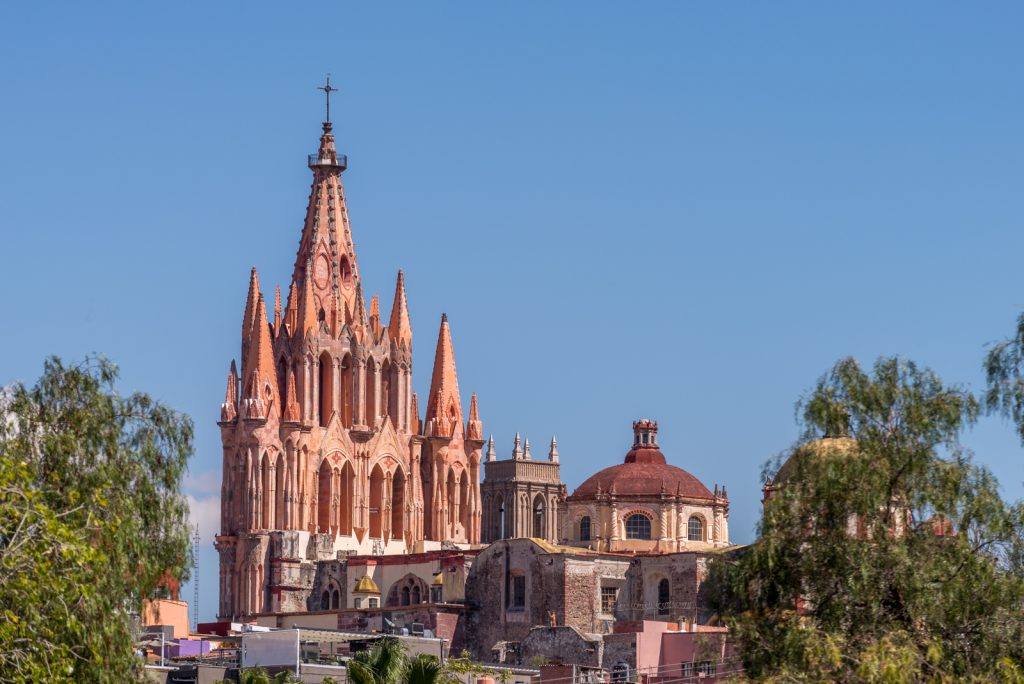
La Parroquia de San Miguel Arcángel is unique in Mexico and one of the most photographed churches in the country.
Also unique are the original narrow cobblestoned streets that have not been rebuilt or widened for hundreds of years. Repaired in some places, but nothing more since the stones were originally placed. Some are now one-way or pedestrian-only surfaces are uneven, so be sure to wear a good pair of walking shoes. Town plazas continue to be the favored venue for community concerts, festivities, and people-watching. We got in on one of the parades, complete with giant puppets, on one of the evenings we were there.
Architecture is unique and beautiful here, and Ron and I could have easily taken pictures of just doors and windows because of the variety. Although many buildings have functional courtyards and rooftop patios, details and colors are all different. Doors, and even door-knockers, once the equivalent of an address, add to the distinctiveness of this amazing place. Grills on windows provide spaces for potted geraniums – and some are viewing areas for small family pets.
“Twenty years from now you will be more disappointed by the things you didn’t do than by the ones you did do. So throw off the bowlines, sail away from the safe harbor. Catch the trade winds in your sails. Explore. Dream. Discover.” -Mark Twain
Follow us on social media!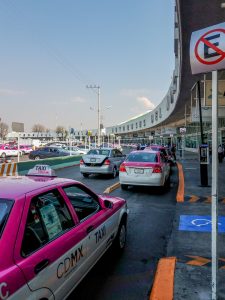

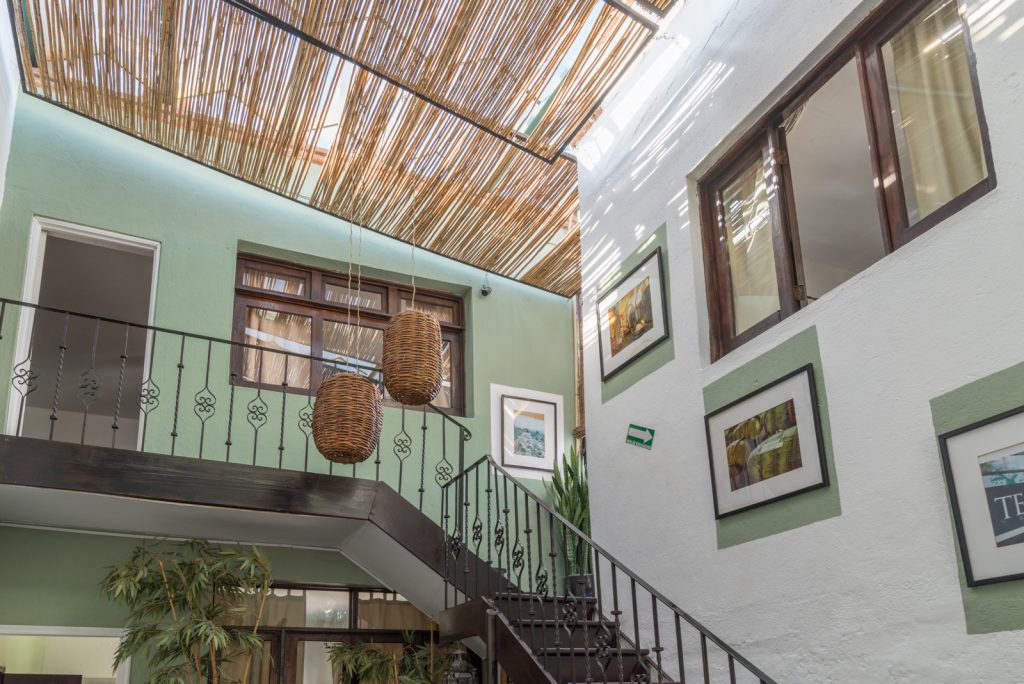
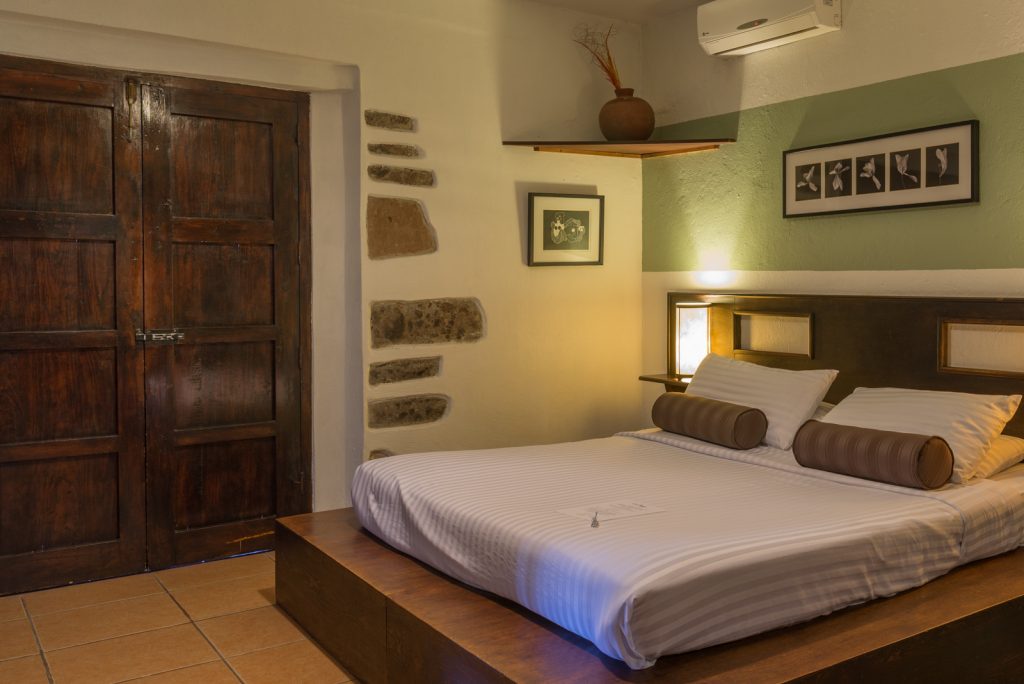
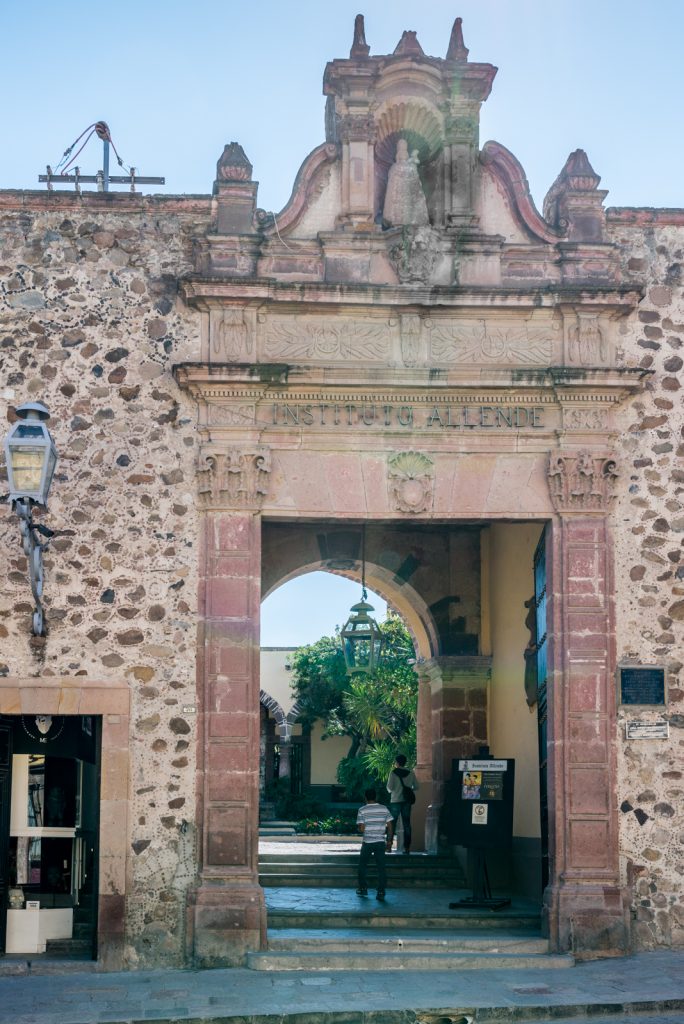

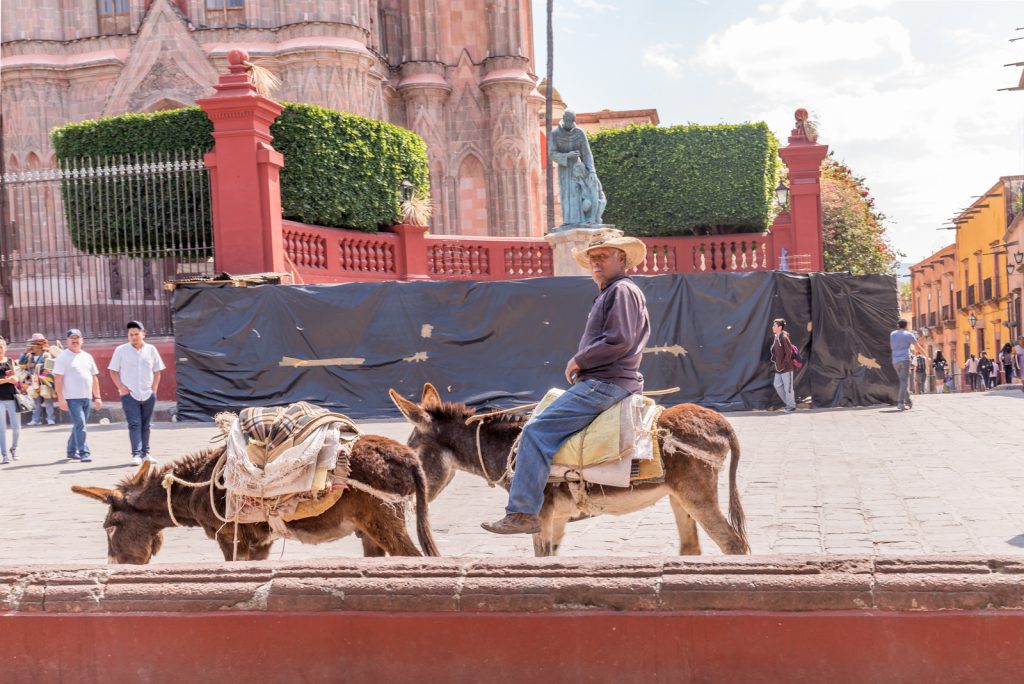
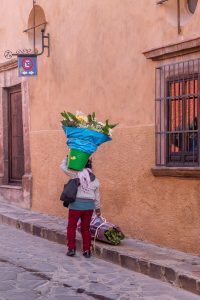
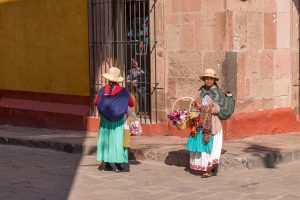
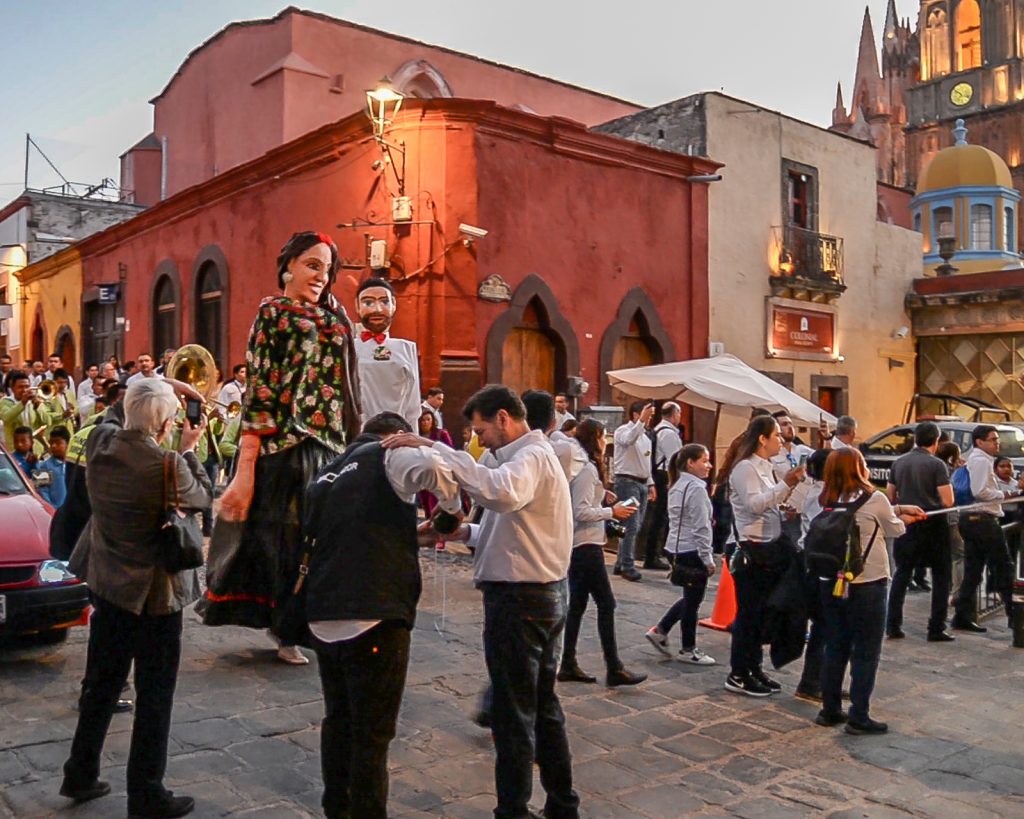

No comments yet.